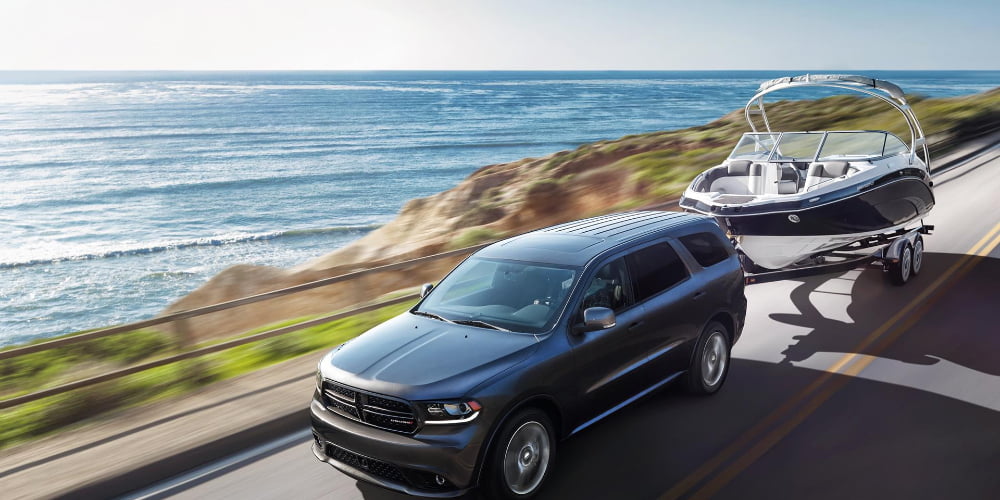Fixing the 2016 Dodge Durango Check Engine Light
Contents
Hide
The 2016 Durango carries updated 8-speed transmissions, refined stop/start logic, and improved catalyst monitoring. When the MIL illuminates, the PCM logs code data that guides repairs. This guide prioritizes those codes, explains the diagnostic workflow, and outlines preventive maintenance.
- Applies to: 2016 Durango SXT, Limited, R/T, Citadel, and special trims.
- Tools: Enhanced OBD-II scanner with Mode $06$, smoke machine, fuel pressure gauge, DVOM, oscilloscope, mechanical oil-pressure gauge.
- Immediate warning: A flashing MIL signals severe misfire—reduce load and diagnose ignition/fuel systems at once.
Common 2016 Durango Codes
| Code | Subsystem | Likely Cause | First Checks |
|---|---|---|---|
| P0300/P030x | Ignition/Fuel | Coils, plugs, injector imbalance, compression loss | Review misfire counters, inspect plugs/coils, swap components, verify compression/leak-down. |
| P0430 | Catalyst | Bank 2 efficiency drop | Check misfire history, inspect exhaust leaks, compare O2 sensor waveforms. |
| P2098 | Fuel Trim | Post-cat lean condition | Smoke-test intake/exhaust, inspect PCV system, monitor fuel trims under steady cruise. |
| P06DD/P06DE | Oil Pump Control | Dual-stage pump stuck or wiring issue | Confirm Mopar filter, measure mechanical oil pressure hot, inspect harness near oil cooler. |
| P1DF3 | Stop/Start | Auxiliary battery weakness, calibration mismatch | Load-test both batteries, inspect grounds, update PCM/TCM, perform relearn. |
Diagnostic Workflow
- Capture baseline data: Save DTCs, freeze-frame, permanent codes, Mode $06$ misfire results, and fuel trims.
- Resolve misfires: Replace plugs per schedule, swap coils, evaluate injector balance, and verify compression to protect catalysts.
- Check fuel trims/catalysts: Repair intake/exhaust leaks, then road-test while graphing O2 sensors and trims.
- Inspect oil pump control: Attach a mechanical gauge to confirm pressure hot at idle and 3,000 rpm; inspect wiring for abrasion.
- Diagnose stop/start faults: Test batteries, inspect ground straps, update software, and run stop/start relearn after repairs.
- Complete validation drive: Clear codes, drive 50 miles with mixed city, cruise, and idle segments, and verify no codes return.
Driving Guidance During Diagnosis
- Avoid towing, heavy acceleration, or high-speed runs while misfire or catalyst codes are active.
- Short trips with EVAP-only codes are acceptable, but repair before inspection deadlines.
- Monitor oil pressure, coolant temperature, and transmission temperature to prevent secondary issues.
Preventive Maintenance Checklist
- Use MS-6395 0W-20/5W-20 oil and Mopar filters every 6,000 miles.
- Replace spark plugs per schedule (100k V6 / 30k V8) and torque coils correctly.
- Inspect intake manifold seals, PCV system, and purge hoses at each service.
- Check exhaust manifold bolts annually; leaks trigger catalyst/fuel-trim codes.
- Test both batteries twice a year on stop/start models.
Frequently Asked Questions
Is P0430 an automatic catalyst replacement?
No. Repair misfires and leaks first, drive the Durango, and replace the catalyst only if efficiency remains low.
Can I ignore P1DF3 if stop/start still works?
Ignoring P1DF3 risks battery failure and repeated MIL events. Test both batteries and complete the relearn after repairs.
How long until the MIL stays off after repairs?
Drive roughly 50 miles with mixed conditions and confirm readiness monitors are COMPLETE before inspection.
